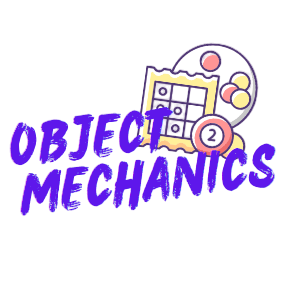เข้าเล่นufabet แจกจัดหนักกับทุกความมันส์เว็บแท้อัตราจ่ายดี
เมื่อคุณก้าวเข้าสู่โลกของเว็บพนันออนไลน์คุณจะพบกับประสบการณ์ที่ไม่เหมือนใคร เข้าเล่นufabet แหล่งรวมความสนุกและความตื่นเต้นที่ไม่รู้จบ ด้วยอัตราจ่ายที่ดีที่สุดในวงการ คุณจะได้สัมผัสกับความร่ำรวยที่รออยู่เพียงแค่ปลายนิ้วของคุณ ไม่ว่าคุณจะเป็นนักเดิมพันมือใหม่หรือนักพนันระดับเซียน ufabet พร้อมที่จะมอบความสนุกและโอกาสในการชนะที่ไม่มีใครเทียบได้ การเข้าเล่นที่นี่ไม่ใช่แค่การเสี่ยงโชค แต่เป็นการเข้าร่วมในประสบการณ์ที่ยิ่งใหญ่และรอคอยให้คุณได้เป็นส่วนหนึ่งของมัน
เข้าเล่นufabet มีครบครันกับทุกความบันเทิงรวมเกมเดิมพันพรีเมี่ยม
เข้าเล่นufabet วันนี้ คุณจะได้สัมผัสกับประสบการณ์การเดิมพันระดับพรีเมี่ยมที่ครบครัน ไม่ต้องเสียเวลาไปที่อื่นอีกต่อไป เพราะที่นี่มีทุกอย่างที่คุณต้องการ ตั้งแต่เกมกีฬายอดนิยมอย่างฟุตบอล บาสเกตบอล เทนนิส ไปจนถึงคาสิโนสดที่จะทำให้คุณรู้สึกเหมือนอยู่ในลาสเวกัส ไม่ว่าคุณจะชอบเล่นอะไร ufabet มีให้ครบ ด้วยระบบที่ทันสมัย การเดิมพันทำได้ง่ายดายเพียงปลายนิ้ว อัตราต่อรองที่ดีที่สุดในตลาด และโปรโมชั่นสุดคุ้มที่จะทำให้คุณได้กำไรมากขึ้น

เว็บตรงมั่นคงเป็นเว็บหลัก เข้าเล่นufabet เว็บแท้มีใบเซอร์
เข้าเล่นufabet เว็บตรงมั่นคงเป็นเว็บหลักที่เปิดโอกาสให้ผู้เล่นได้สัมผัสประสบการณ์การเล่นพนันออนไลน์อย่างแท้จริง ด้วยความเชื่อมั่นในความปลอดภัยและความโปร่งใส เว็บไซต์นี้ได้รับการรับรองจากหน่วยงานที่เกี่ยวข้อง ทำให้ผู้เล่นสามารถเข้าเล่น ufabet ได้อย่างสบายใจ โดยไม่ต้องกังวลเกี่ยวกับการโกงหรือการขาดความรับผิดชอบจากผู้ให้บริการ แพลตฟอร์มของเรามีความเสถียรและรองรับจำนวนผู้เล่นได้อย่างมากมาย ไม่ว่าจะเป็นเกมคาสิโนสด สล็อตออนไลน์หรือการเดิมพันกีฬา ผู้เล่นจะได้พบกับความสนุกสนานและความตื่นเต้นที่ไม่มีที่สิ้นสุด
ให้ถอนได้ทันทีที่เกมส์แตก ufabet เข้าสู่ระบบ ไม่มีกั๊กยอดถอน
ใครๆก็รู้ว่า ufabet เข้าสู่ระบบ คือเว็บพนันออนไลน์ที่ดีที่สุด เราการันตีว่าคุณสามารถถอนเงินได้ทันทีที่เกมแตก ไม่มีข้อแม้ ไม่มีการกั๊กยอดถอนใดๆทั้งสิ้น เราจ่ายจริง จ่ายเต็ม จ่ายไว ไม่มีกำหนดขั้นต่ำในการถอน คุณจะได้รับเงินรางวัลทั้งหมดที่คุณชนะอย่างรวดเร็วและง่ายดาย เข้ามาเล่นกับเราวันนี้ รับรองว่าคุณจะได้รับประสบการณ์การเดิมพันที่ดีที่สุด พร้อมระบบการเงินที่มั่นคงและโปร่งใส การเข้าเล่นufabet คือคำตอบสุดท้ายสำหรับนักพนันทุกคน
เว็บหลัก ทางเข้า ufabet มือถือ ระบบอัตโนมัติถูกกฏหมายโปร่งใสที่สุด
เว็บหลัก UFABET คือทางเลือกที่ดีที่สุดสำหรับการเดิมพันออนไลน์ ระบบอัตโนมัติของเราทำงานอย่างรวดเร็วและแม่นยำ ไม่มีข้อผิดพลาด คุณสามารถวางใจได้ว่าการทำธุรกรรมทุกอย่างถูกต้องตามกฎหมายและโปร่งใส เราไม่มีอะไรต้องปิดบัง ทุกขั้นตอนสามารถตรวจสอบได้ ความปลอดภัยและความน่าเชื่อถือคือสิ่งสำคัญที่สุดสำหรับเรา เลือก ทางเข้า ufabet มือถือ วันนี้ และสัมผัสประสบการณ์การเดิมพันที่ดีที่สุด ไม่มีที่ไหนจะดีไปกว่านี้อีกแล้ว
ไม่อั้นอัตราการชนะสูงสุด ufabet เข้าสู่ระบบ888 การันตีได้ถอนแน่นอน
ถึงเวลาแล้วที่คุณจะต้องเปลี่ยนวิธีการเล่นพนันออนไลน์ของคุณ การufabet เข้าสู่ระบบ888 คือคำตอบสุดท้ายสำหรับนักพนันที่ต้องการความมั่นใจในการเดิมพัน ไม่ว่าคุณจะเป็นมือใหม่หรือนักพนันมืออาชีพ เราการันตีว่าคุณจะได้รับประสบการณ์การเล่นที่เหนือชั้นกว่าที่อื่น อัตราการชนะสูงสุดของเราไม่มีขีดจำกัด คุณสามารถเล่นได้อย่างเต็มที่โดยไม่ต้องกังวลเรื่องเพดานการจ่ายเงิน เราเชื่อมั่นในระบบของเราและพร้อมที่จะจ่ายเงินรางวัลให้คุณอย่างเต็มที่
เว็บมาแรงที่สุด เข้าเล่นufabet มีความเชี่ยวชาญในเกมเดิมพันอันดับ
เว็บมาแรงที่สุดในยุคนี้ต้องยกให้กับ ufabet ซึ่งเป็นเว็บไซต์ที่มีชื่อเสียงและเป็นที่ยอมรับในวงการเกมเดิมพันออนไลน์อย่างแท้จริง ด้วยความเชี่ยวชาญในเกมพนันที่หลากหลายและครบวงจร เข้าเล่นufabet เว็บที่ได้รับการจัดอันดับให้เป็นอันดับ 1 ในใจนักเดิมพันทั้งหลาย โดยเฉพาะอย่างยิ่งในประเทศไทยที่ผู้เล่นต่างยกย่องให้เป็นแหล่งทำเงินที่มีความน่าเชื่อถือและปลอดภัยที่สุด ไม่ว่าจะเป็นการแทงบอล คาสิโนสด หรือเกมสล็อตออนไลน์ ทุกเกมล้วนเต็มไปด้วยความตื่นเต้นและโอกาสในการทำกำไรอย่างมหาศาล

เข้าเล่นufabet ฝากถอนไม่มีขั้นต่ำโบนัสจัดเต็มไม่มีอั้น
เข้าเล่นufabet ท่านจะได้พบกับประสบการณ์การเล่นเกมที่ไม่มีที่สิ้นสุด พร้อมทั้งระบบฝากถอนที่ไม่จำกัดขั้นต่ำ ทำให้ท่านสามารถเริ่มต้นการเดิมพันได้อย่างสะดวกสบาย ไม่ว่าท่านจะมีงบประมาณเท่าใด ก็สามารถเข้าร่วมสนุกสนานได้อย่างไร้ขีดจำกัด ระบบที่ออกแบบมาอย่างพิถีพิถันนี้ไม่เพียงแต่ทำให้ท่านรู้สึกสะดวกสบาย แต่ยังช่วยให้ท่านมีความยืดหยุ่นในการจัดการเงินทุนของท่านได้อย่างเต็มที่ โดยไม่ต้องกังวลเรื่องเงื่อนไขที่ยุ่งยาก
เครดิตฟรีลงทุน 1 บาท เข้าเล่นufabet ลุ้นรับแจ็คพอตง่ายๆ
เครดิตฟรีลงทุน 1 บาท เข้าเล่นufabet เป็นโอกาสที่ไม่ควรพลาดสำหรับผู้ที่ต้องการเข้าสู่โลกแห่งการเดิมพันออนไลน์อย่างมีสไตล์และความคุ้มค่า โดยการลงทุนเพียง 1 บาทนั้น เป็นการเปิดประตูสู่ความเป็นไปได้ที่ไม่มีที่สิ้นสุด เมื่อท่านเข้าร่วมเล่นกับ ufabet ท่านจะได้พบกับประสบการณ์ที่น่าตื่นเต้นและเสน่ห์ของเกมที่หลากหลาย ทั้งคาสิโนสด, สล็อตออนไลน์ และเกมกีฬาที่มีให้เลือกมากมาย ทุกๆ การเดิมพันคือการเปิดโอกาสให้ท่านได้ลุ้นรับแจ็คพอตที่อาจจะเปลี่ยนชีวิตของท่านไปตลอดกาล
ufabet เข้าสู่ระบบ 168 เกมดีเข้าสปินง่ายไม่ง้อดวงแอดมินดูแลดี
ufabet เข้าสู่ระบบ 168 คือทางเลือกที่ชาญฉลาดสำหรับนักพนันออนไลน์ทุกคน ไม่ว่าคุณจะเป็นมือใหม่หรือมืออาชีพ ufabet เข้าสู่ระบบ777 เกมที่นี่ถูกออกแบบมาให้เล่นง่าย เข้าสปินได้รวดเร็ว ไม่ต้องพึ่งดวงมากนัก แต่ใช้ทักษะและกลยุทธ์เป็นหลัก อย่าคิดว่าการเล่นพนันออนไลน์ต้องเสี่ยงโชคอย่างเดียว ที่ ufabet เรามีระบบที่ยุติธรรม โปร่งใส ให้คุณมีโอกาสชนะได้จริง นอกจากนี้ทีมแอดมินของเรายังคอยดูแลคุณตลอด 24 ชั่วโมง พร้อมให้คำแนะนำและแก้ไขปัญหาทุกอย่างอย่างรวดเร็ว
ระบบอัตโนมัติ ufabet เข้าสู่ระบบ ล่าสุด รวมเกมเดิมพันคาสิโนระดับแนวหน้า
ระบบอัตโนมัติเข้าเล่น ufabet คือทางเลือกที่ดีที่สุดสำหรับนักพนันยุคใหม่ ไม่ต้องเสียเวลารอคอยอีกต่อไป เพราะคุณสามารถเข้าสู่ระบบและเริ่มเดิมพันได้ทันทีด้วยระบบอัตโนมัติที่รวดเร็วและปลอดภัย อย่าพลาดโอกาสในการทำกำไรกับ ufabet เข้าสู่ระบบ ล่าสุด เว็บพนันออนไลน์ที่ดีที่สุดในตอนนี้ สมัครเลย และคุณจะได้พบกับโปรโมชั่นสุดพิเศษที่จะทำให้คุณได้เปรียบในทุกการเดิมพัน เข้าร่วมกับเราวันนี้ และสัมผัสกับความตื่นเต้นที่คุณไม่เคยพบที่ไหนมาก่อน

เข้าเล่นufabet เว็บใหม่ล่าสุดระบบออโต้ เปิดให้บริการทุกวัน
เข้าเล่นufabet เว็บใหม่ล่าสุดที่มาพร้อมกับระบบอัตโนมัติอันล้ำสมัย ที่จะทำให้การเข้าถึงและเล่นเกมพนันออนไลน์เป็นเรื่องง่ายดายและสะดวกสบายยิ่งขึ้น ด้วยการออกแบบที่สวยงามและฟังก์ชันการทำงานที่มีประสิทธิภาพ ทำให้ผู้เล่นสามารถเพลิดเพลินกับประสบการณ์การเดิมพันที่ยอดเยี่ยมได้ทุกวัน ไม่ว่าจะเป็นการแทงบอลออนไลน์ คาสิโนออนไลน์ หรือเกมสล็อต ที่ทุกคนสามารถเข้าร่วมสนุกได้ตลอด 24 ชั่วโมง ระบบอัตโนมัติทำให้การฝาก-ถอนเงินเป็นไปอย่างรวดเร็วและปลอดภัย สร้างความเชื่อมั่นให้กับผู้เล่นทุกคนได้เป็นอย่างดี
สมัคร เข้าเล่นufabet รับสูตรเล่นฟรีทุกค่าย ถอนได้ชัวร์
สมัคร เข้าเล่นufabet วันนี้ รับสูตรเด็ดทุกค่ายเกมฟรีทันที ไม่ต้องเสียเงินซื้อ คุณจะได้รับสูตรลับที่ใช้ได้จริงสำหรับทุกเกมในระบบ ufabet เข้าสู่ระบบ777 ทั้งสล็อต บาคาร่า รูเล็ต และอื่นๆ อีกมากมาย สูตรของเราผ่านการทดสอบมาแล้วว่าใช้ได้ผล เพิ่มโอกาสชนะเดิมพันอย่างแน่นอน ที่สำคัญคือคุณสามารถถอนเงินได้จริง 100% ไม่มีข้อผูกมัดใดๆ เราการันตีการจ่ายเงินที่รวดเร็วและปลอดภัย สมัครวันนี้ รับสูตรฟรีทันที แล้วคุณจะรู้ว่าทำไม ufabet ถึงเป็นเว็บพนันออนไลน์อันดับ 1 ของเมืองไทย
ufabet เว็บหลัก เว็บตรงเว็บมั่นคงที่สุดไม่มีขั้นต่ำในการลงเล่น
เว็บ UFABET คือตัวเลือกที่ดีที่สุดสำหรับนักพนันออนไลน์ทุกคน ไม่ว่าคุณจะเป็นมือใหม่หรือนักพนันมืออาชีพ เราพร้อมให้บริการคุณด้วยระบบที่มั่นคงและปลอดภัยที่สุด ที่นี่ไม่มีขั้นต่ำในการเดิมพัน คุณสามารถเริ่มต้นได้ด้วยเงินเพียงเล็กน้อย ไม่ต้องกังวลเรื่องเงินทุน เราเปิดโอกาสให้ทุกคนได้สัมผัสประสบการณ์การเดิมพันระดับพรีเมียม ด้วย ufabet เว็บหลัก คุณจึงมั่นใจได้ว่าจะได้รับเงินรางวัลเต็มจำนวนโดยไม่มีการหักค่าธรรมเนียมใดๆ เรามีทีมงานมืออาชีพคอยดูแลคุณตลอด 24 ชั่วโมง
ufabet เข้าสู่ระบบ ฝาก-ถอน เว็บตรงค่ายใหญ่มาตรฐาน U.S.A ของแท้ 100%
เว็บ ufabet คือตัวเลือกที่ดีที่สุดสำหรับนักพนันออนไลน์ที่ต้องการความมั่นคงและความน่าเชื่อถือ เราคือเว็บตรงจากค่ายใหญ่ที่ได้มาตรฐานระดับสากล ไม่ผ่านเอเย่นต์หรือคนกลาง คุณจึงมั่นใจได้ว่าจะได้รับบริการที่ดีที่สุดและปลอดภัย 100% สมัครสมาชิกufabet เข้าสู่ระบบ ฝาก-ถอน วันนี้ และสัมผัสกับความแตกต่างด้วยตัวคุณเอง เรามีโปรโมชั่นสุดพิเศษรอคุณอยู่ พร้อมระบบฝาก-ถอนที่รวดเร็วทันใจ ตลอด 24 ชั่วโมง ไม่มีวันหยุด เข้ามาเป็นส่วนหนึ่งของ ufabet และคว้าโอกาสในการทำกำไรแบบไม่มีขีดจำกัดได้แล้ววันนี้
